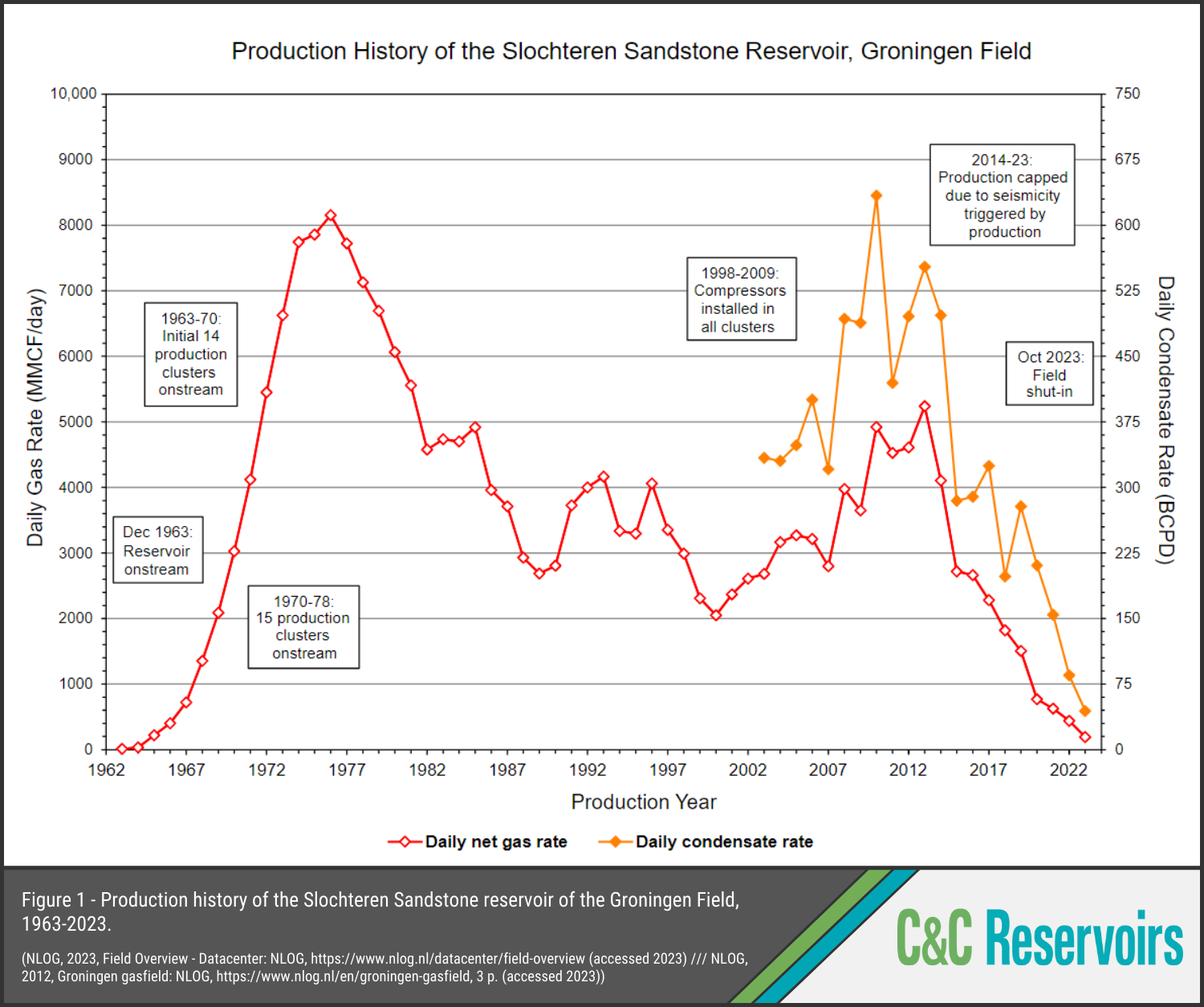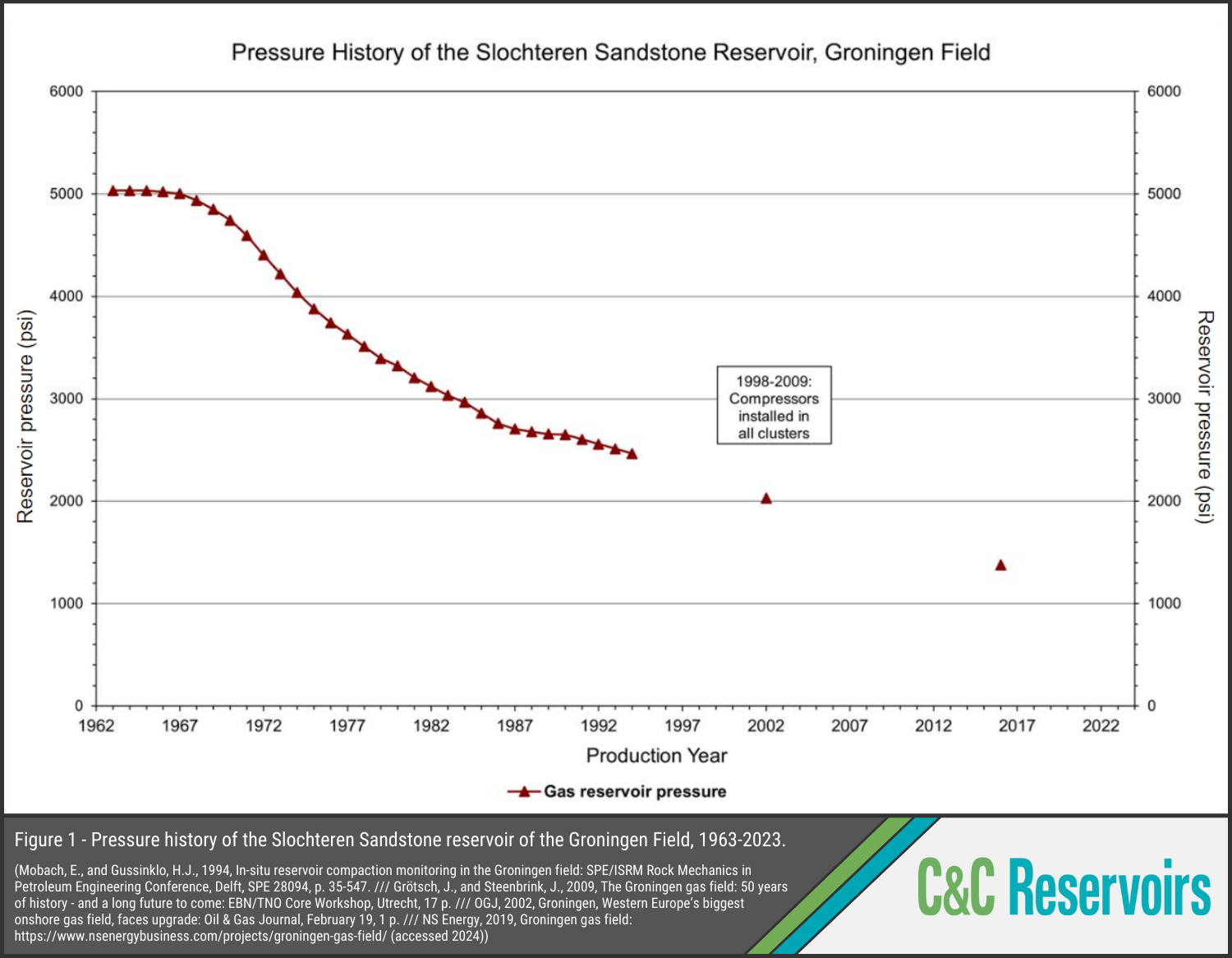The Groningen Field
Analogue Spotlight
With a GIIP of 113.2 TCF, the Groningen Field hosts the largest gas accumulation in Europe. However, the field is due to be abandoned in October 2024 due to earthquakes linked to production. But what caused this?
Brought onstream in 1963, Groningen experienced great initial success with production increasing rapidly from an average of 11.6 MMCF/day to a plateau of 7.9 BCF/day between 1974-76, peaking at 8.2 BCF/day in 1976 (Fig. 1).
Despite this success, major problems soon arose as reservoir pressure had depleted to more than half of its original value (Fig. 2). This had a dramatic impact on production and by 1998 the production rate had quartered with only ~2 BCF/day being produced. To help production recover, surface compressors were installed in each of the production clusters. This allowed production to reach a rate of 5.2 BCF/day in 2013 and also caused a notable increase in gas condensate production, from 334 BCPD to a peak of 634BCPD in 2010 (Fig.1).
The success was, however, short-lived… In 2014, Dutch authorities imposed serious sanctions on the Groningen Field due to production related seismicity caused by pressure depletion. The sanctions stated a targeted reduction in production of 80%.
By 2023, a mere 191 MMCF/day and 44 BCPD were being produced. Despite this significant reduction in production, persistent earthquakes and subsidence have continued over the last decade and so the field was shut-in in October 2023. Eventually the decision was made to permanently abandon the field in October 2024.


